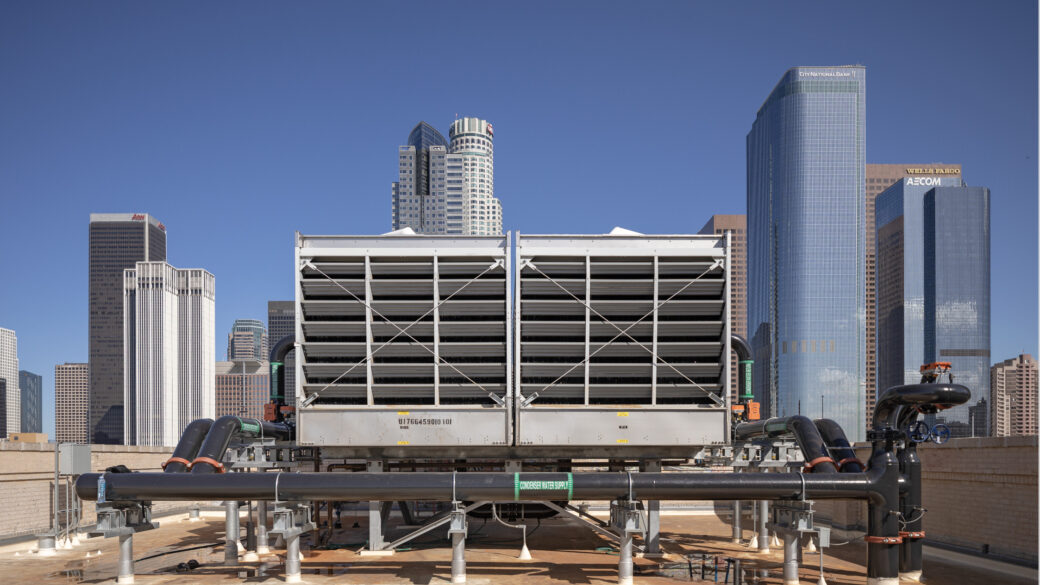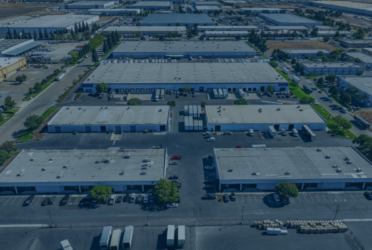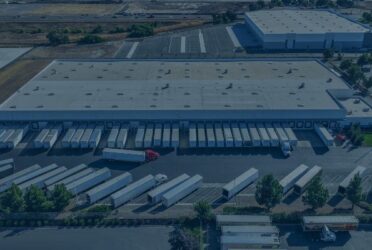What is Value-Add Commercial Real Estate?

1 What is Value-Add Commercial Real Estate?
1.1 What is the meaning of value-add in commercial real estate?
1.1.1 Value-add commercial real estate examples
1.1.1.1 What is a value-add building in commercial real estate?
1.1.1.2 What is light value-add commercial real estate?
1.1.1.3 What is heavy value-add commercial real estate?
1.2 Value-add vs opportunistic commercial real estate
1.3 Is value-add commercial real estate a good investment strategy?
There is no one-size-fits-all approach in commercial real estate. There are many ways to invest in income-generating property, from a small apartment building to a large office building, a small hotel, or a large retail strip center.
The four primary investment strategies are classified as: Core, Core Plus, Value-Add and Opportunistic. In short, Core investments are considered the lowest risk and therefore, tend to generate the lowest returns. Core Plus investments are considered marginally riskier, followed by Value-Add and Opportunistic deals, the latter of which tend to be the highest risk but have the potential to generate the most substantial returns for investors.
In this article, we provide a short primer on Value-Add commercial real estate investing. Read on to learn more about this mid-risk investment approach.
What is the meaning of value-add in commercial real estate?
Value-add real estate investing is an investment strategy in which an investor or group purchases an asset with the intent of making either light or significant property upgrades. Property upgrades can be either physical or operational in nature, and generally include some combination of both. In either case, a value-add strategy assumes there is room for revenue growth upon completion of said improvements.
Value-add real estate investing is typically considered riskier than investing in an already stabilized asset. Therefore, it tends to be classified as a medium- to high-risk/medium- to high-reward investment strategy. In order to mitigate this risk, most passive investors will opt to invest alongside a highly experienced value-add real estate sponsor rather than trying to execute a value-add strategy on their own.
Value-add commercial real estate examples
Given the uniqueness of each individual commercial property, the range of value-add investments is virtually endless. This investments approach can be utilized at every property scale. For example, someone might invest in a 10-unit apartment building with the intention of gut renovating each unit as they turn over. The sponsor may decide to upgrade each unit with higher-end finishes with the end goal of converting the property to condos that can each be sold to individual buyers at a higher price than they would earn if executing a value-add strategy and selling as an apartment building.
Opportunities to invest in larger value-add commercial properties are equally limitless. A significant portion of the nation’s commercial real estate inventory was developed during the 1970s and 1980s when land was cheap and the economy was thriving. Now, a half-century later, many of these properties still look and feel like they did in decades past. These properties are ripe for transformation using value-add investment strategies.
What is a value-add building in commercial real estate?
A value-add property is one that is underperforming for any number of reasons. Those reasons could be, but are not limited to, the following:
The property is older and in need of upgrades or other improvements that will modernize the building to the same degree as its more recently built competition;
The property has substantial deferred maintenance;
The property has disproportionately high vacancy relative to local market standards and is therefore, generating less cash flow than an investor would otherwise expect;
The property is mismanaged, either by the sponsor or a third-party property manager; and/or
The property suffers from significant capital constraints.
What is light value-add commercial real estate?
A light-value add real estate investment strategy might entail purchasing a Class C apartment building and refreshing each of the tenant spaces with new paint, carpet and lighting fixtures. The sponsor might also make significant upgrades to common areas to make the property feel newer and higher-end. As space allows, the sponsor might convert underutilized areas to more modern property amenities, such as a lounge or co-work area where building tenants can have events or host guests on occasion.
A light value-add strategy will also generally entail some modest upgrades to the property’s exterior, including improved landscaping and repaving and/or restriping of the parking lot.
In addition to physical improvements, a light value-add strategy might also entail operational improvements that help to save money or generate additional revenue. This could include, for example, replacing the existing property manager or leasing team. It might also include renewing leases on a triple-net basis, which puts the ownness for several expenses on the tenant instead of the landlord. The sponsor might also pursue alternative marketing techniques, including temporary subsidies, to fill the property and begin generating cash flow in instances of higher-than-average vacancies.
What is heavy value-add commercial real estate?
Light-value add real estate investing is decidedly different than heavy value-add real estate investing and requires a different approach. “Heavy” value-add real estate investing is when a sponsor purchases a property in need of significant improvements—usually both physically and operationally.
For example, while a light value-add deal might involve “refreshing” a property, a heavy value-add deal might contemplate gutting the property to the studs, reconfiguring the internal layout, and then finishing each space from scratch.
A heavy value-add deal might also involve an addition to or partial demolition of the property. This is often the case when a property’s current configuration is sub-optimal and major building improvements would enhance the property’s value. At a multifamily apartment building, this might involve adding a clubhouse or recreational area. At an office property, it may involve adding additional height to increase the total leasable square footage. In urban areas, it is not uncommon for heavy value-add strategies, particularly at office buildings, to involve the “re-skinning” of a building – i.e., the addition of a newer, more modern façade. Reskinning a building not only improves the aesthetic, but can also be done to improve energy efficiency.
Value-add vs opportunistic commercial real estate
As noted above, there are four primary commercial real estate investment strategies: Core, Core Plus, Value-Add and Opportunistic.
Core investments are generally newer, Class A properties located in primary markets. They are already stabilized and generating steady cash flow. Core properties are considered to be the “safest” of all real estate investments but correspondingly, generate lower returns. Core investments are often the target of institutional investors like life insurance companies, pension funds and other groups with significant capital to conservatively invest. “Core” real estate is akin to “income” investments in the stock market.
Core Plus investments are more like “growth and income” investments in the stock market. These properties are considered somewhat less desirable than Core properties for any number of reasons. For example, a Core Plus property might be newly constructed but located in a fringe neighborhood that, in turn, results in slightly lower rents than someone might get for the same property located in a thriving downtown neighborhood.
Value-add investments, as already discussed, tend to need some combination of property and/or operational improvements prior to stabilization. These improvements may be a light lift or might require more substantial, “heavy” investments that are capital intensive. In either case, value-add assumes a sponsor will be actively engaged in updating the property in order to fully realize the building’s revenue-generating potential.
Value-add properties are often confused with Opportunistic commercial real estate deals. Opportunistic real estate investments are decidedly different and more akin to the “growth” category in the stock market.
Opportunistic investments are some of the most complicated commercial real estate projects and can take several years before generating any returns for investors. Types of opportunistic real estate deals include:
As its name implies, ground-up development is when an investor purchases a parcel and goes on to build a new development from scratch (or, from the “ground up”). The parcel, upon purchase, might be raw land. It might also contain a building or other structures that need to be demolished for the site to be cleared and prepared for new development.
Ground-up development is one of the most challenging types of commercial real estate investing. It requires the sponsor to obtain the necessary permits and approvals before breaking ground. This process, often referred to as the “entitlements” process, can be more or less complicated depending on where the site is located. In major metro areas, particularly in expensive and land-constrained cities, the entitlement process can take a few years to complete. The sponsor must continue paying property taxes, insurance and will be incurring other costs during this time—even though the property is vacant and not generating any income. (Some sponsors will delay site preparation until they have their permits and approvals in place, just as a way of hedging against the risk that the project is not approved as anticipated). It is increasingly common for municipalities to require ground-up developer to make contributions to the local community for a variety of purposes (affordable housing, open space, subsidized retail, infrastructure improvements, etc.) prior to granting the necessary approvals. This is especially common when a developer is seeking an up-zoning or variance that would allow for greater density than would otherwise be allowed under existing zoning codes.
Ground-up development projects are best executed by experienced sponsors who have strong balance sheets and/or patient investors. Investors should understand the risks associated with ground-up projects. For example, if a project fails to obtain its approvals, the returns can be dramatically impacted. This is true even if approvals are delayed. A one-year delay can impact the sponsor’s bottom line, particularly if market conditions change during that period (e.g., if labor or material costs rise significantly).
Property conversion is another form of opportunistic real estate investing. Conversion, sometimes referred to as redevelopment, has become increasingly popular as some properties near the end of their useful life. For example, many retail strip centers and traditional indoor malls are being converted to “lifestyle centers” that contain a mix of housing, retail, and office development. Many office buildings are being transformed into lab buildings that can accommodate a range of R&D activities. Churches and former schoolhouses are often redeveloped into condos or apartment buildings.
Conversion, like ground-up development, carries risk. There is arguably less risk associated with conversion than new development since the shell of the building will remain. However, there is still a significant permitting risk. A change of use will usually require a change in zoning, and therefore, a new set of permits than what was used to originally construct the property.
Is value-add commercial real estate a good investment strategy?
Value-add real estate investing is considered somewhat riskier than buying a stabilized asset, but it can be highly lucrative for those who are able to execute their business plans successfully. In exchange for the higher risk, investors can expect higher returns.
Value-add real estate investing has become increasingly popular as the cost to construct new buildings has risen. In many markets, construction and labor costs have increased so dramatically that it is actually more cost-effective to execute value-add investment strategies than to build new. There is also less risk involved with value-add investing compared to opportunistic investing, as the property already has its zoning and entitlements because it is an existing building.
How to find value-add commercial real estate for sale
How to find value-add commercial real estate for sale depends on whether someone is looking to actively invest as a sponsor (or through a joint-venture) or intends to passively invest as a limited partner.
A sponsor looking to invest in value-add real estate will usually start by browsing publicly available listings. Smaller value-add opportunities are often posted on commercial real estate listing websites like CoStar and LoopNet.
However, in reality, any value-add real estate deal of any significant size will generally be found either a) through a broker; or b) off-market. In commercial real estate, brokers will usually “shop” around a deal to sponsors they already know and trust. They will go to sponsors who they believe are interested in that product type, who have the capital necessary to execute a value-add strategy, and who can move quickly on the transaction. This obviously creates a barrier to entry for those not already known to the market.
Some of the “best” deals are found by sponsors who work the phones, pound the pavement, and connect directly with property owners to find off-market deals. Most sponsors utilize various software tools and programs to analyze sites based upon their pre-selected investment criteria. For example, a multifamily developer might be interested in apartment buildings located on at least three acres within a 5-mile radius of the downtown core. Once they identify properties that meet these criteria, they will find ways to connect with the owner and present a sale or joint-venture opportunity.
As a passive investor, finding value-add commercial real estate for sale is arguably easier. A simple Google search for “value-add real estate for sale near me” will usually uncover sponsors who are seeking passive investors in a syndicate or fund. A passive investor might also invest in a real estate investment trust (REIT) whose focus is on value-add real estate investments. Investors can also approach brokers in their community to learn more about and connect with the sponsors doing value-add deals in their area.
Investing in value-add real estate can be highly lucrative but it is certainly not for the faint of heart. Value-add real estate investments are best spearheaded by professional real estate sponsors who are well-capitalized, experienced and understand how to mitigate risk.
Any investor considering investing in value-add real estate will want to carefully vet the sponsor, including their proposed business plan. The sponsor should be able to make the case for why they believe their specific investment approach is superior to other strategies that could be deployed for that specific asset.
Ultimately, value-add real estate investing is no better or worse than investing in Core, Core Plus or Opportunistic real estate. It just carries a different amount of risk, and one that an investor should be sure is aligned with their broader investment goals.










 Podcast
Podcast